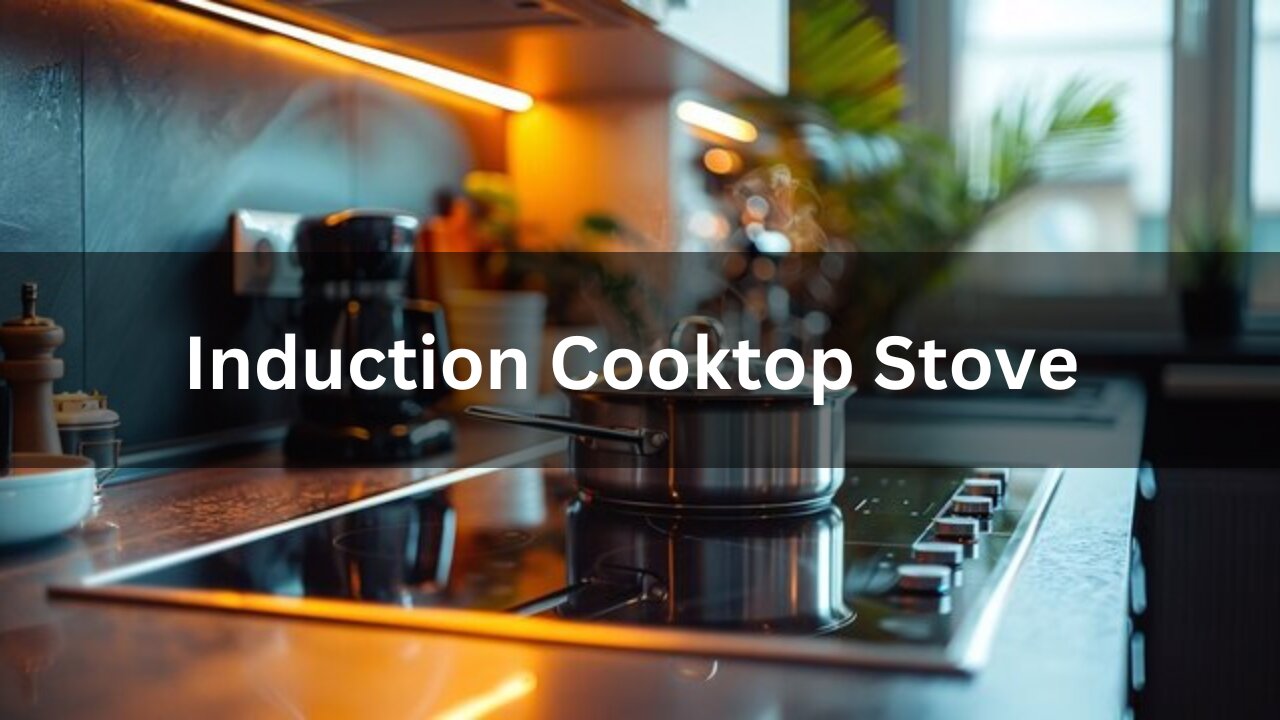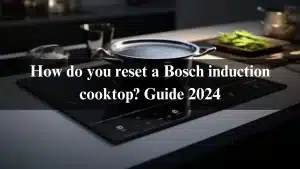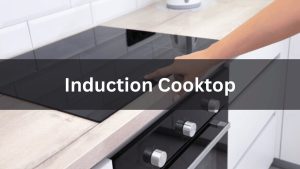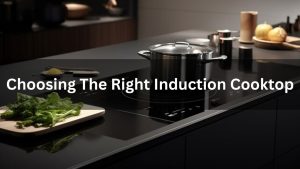Ever wondered how some cooks get their meals ready so quickly? It’s not magic—it’s induction cooktops stove! These modern stoves are changing the way we cook, offering fast and precise heating like never before. But what exactly is an induction cooktop stove, and why is it making waves in kitchens everywhere?
Get ready to dive into the world of this amazing appliance and find out why it could be the perfect addition to your kitchen. Let’s unravel the mystery behind induction cooktops and see what makes them so special!
Table of Contents
What does an induction cooktop stove mean?
An induction stove refers to a cooking appliance that uses induction technology to heat food. Unlike traditional stoves that use gas flames or electric heating elements, an induction stove uses electromagnetic energy to directly heat the cookware. Here’s a breakdown of what that means:
- Electromagnetic Heating: An induction stove has an electromagnetic coil beneath its surface. When you turn it on, this coil generates a magnetic field that interacts with the ferrous (magnetic) cookware placed on it. This interaction produces electric currents in the cookware, which generate heat.
- Direct Heating: The heat is produced directly in the pot or pan, not in the stove itself. This means that the stove surface stays relatively cool, and only the area in contact with the pan gets hot.
- Efficiency and Control: Induction stoves are known for their efficiency and precise temperature control. They heat up quickly and allow for very accurate adjustments in heat levels.
- Safety: Since the stove surface doesn’t get hot (except where the pan touches), there’s less risk of burns or accidental fires. The stove also typically has safety features like auto shut-off if no pan is detected.
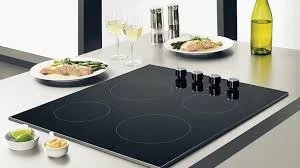
Overall, an induction stove provides a modern, energy-efficient alternative to traditional cooking methods.
What does an induction stove look like?
An induction stove can come in various styles and designs, but they generally share a few common features:
- Flat Surface: Most induction stoves have a smooth, flat ceramic or glass surface. This makes them easy to clean, as spills don’t burn onto the surface.
- Control Panel: The control panel is usually located at the front or side of the stove. It often features touch-sensitive controls or digital displays for setting the temperature, power levels, and timer functions.
- Burner Zones: The stove will have several marked zones or “burners” on its surface where you place the cookware. These are often indicated by circles or grids on the glass surface. On most 30-inch induction cooktops, the magnetic field is concentrated into four spots (or elements).
- Compact and Sleek Design: Portable induction cooktops tend to be compact and lightweight, often designed to be easily moved or stored. Built-in induction stoves can be integrated into kitchen countertops for a sleek, modern look.
- Indicator Lights: Most induction stoves have indicator lights or displays that show when the stove is on or if the surface is still hot.
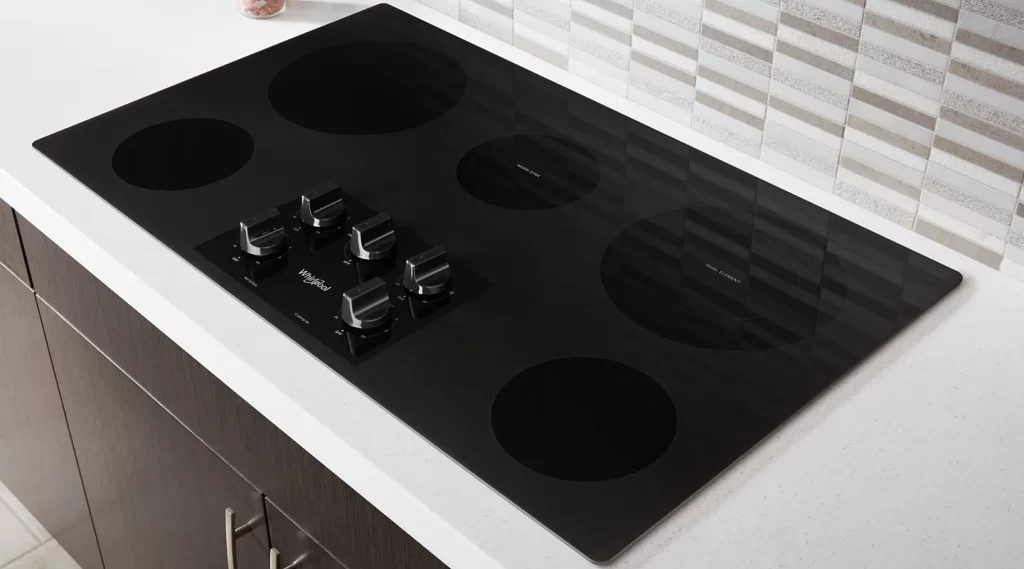
Induction cooktops and ranges look and function a lot like typical glass-top electric models, except that they cook via a magnetic field. Overall, induction stoves have a modern and minimalist aesthetic, often with a black or dark-colored glass surface that complements contemporary kitchen designs.
How does an induction stove work?
An induction stove works using electromagnetic energy to heat cookware directly, rather than heating the stove surface. Here’s a step-by-step explanation of how it functions:
- Electromagnetic Coil: Beneath the smooth glass-ceramic surface of the induction stove is a copper coil. When you turn on the stove and select a heat setting, this coil generates an alternating magnetic field, creating electromagnetic energy.
- Magnetic Field Interaction: The magnetic field produced by the coil interacts directly with induction-compatible cookware. Cookware made of materials such as cast iron or certain types of stainless steel are suitable for induction cooking.
- Induced Currents: The electromagnetic energy induces electric currents, known as eddy currents, in the base of the cookware. These currents generate heat directly within the pan.
- Direct Heating: Because the heat is generated in the cookware itself, the stove surface remains relatively cool. The heat produced in the pan is transferred directly to the food, making the cooking process highly efficient. This method skips the step of heating the cooktop itself, resulting in faster and more even cooking.
- Precise Control: The stove provides precise temperature control because the heating is directly linked to the cookware. This allows for accurate adjustments and quick changes in cooking temperatures.
- Safety Features: Induction stoves often include safety features like automatic shut-off if no cookware is detected or if the pan is removed. They also usually have indicator lights to show when the stove is in use or if the surface is still hot.
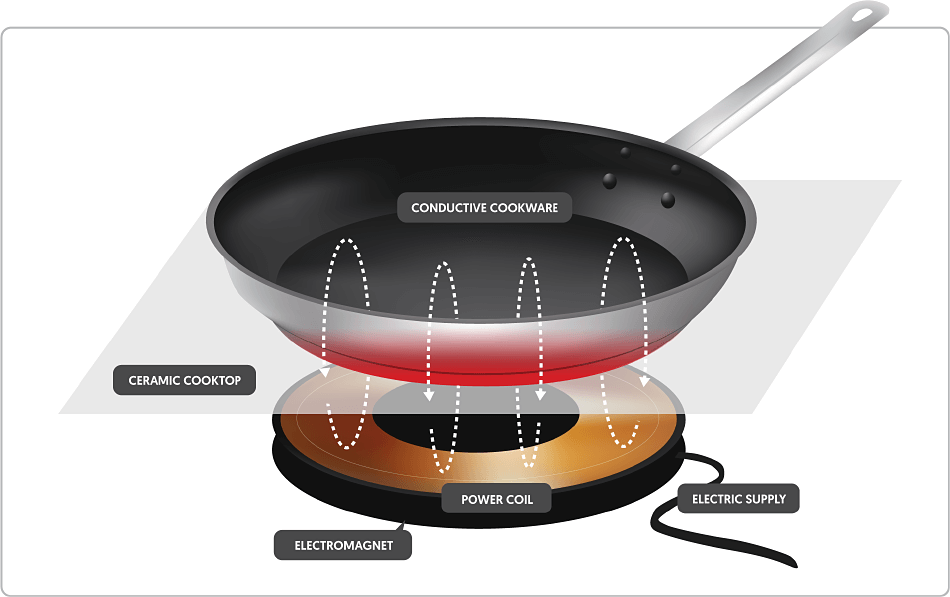
Overall, the use of electromagnetic energy makes induction stoves more energy-efficient and faster compared to traditional gas or electric stoves.
What is medium and high on an induction stove?
On an induction stove, the settings for “medium” and “high” refer to the power levels used to control the heat intensity. These settings are typically indicated either by numbers, symbols, or descriptive terms on the control panel. Here’s a general overview of what these settings mean:
- Medium: This setting usually represents a moderate heat level suitable for general cooking tasks. It provides enough heat to cook food evenly without being too intense. On a scale from low to high, medium is often around the middle range, and it’s ideal for simmering, sautéing, and cooking delicate dishes.
- High: This setting provides the maximum heat output of the induction stove. It is used for tasks that require quick and intense heating, such as boiling water, searing meat, or stir-frying. High heat allows for fast cooking and rapid temperature changes.
Heat Levels: On many induction cooktops, the heat levels are indicated by a number scale from 1 to 9.
- Low Heat: Levels 1-3 are used for gentle cooking, like simmering or keeping food warm.
- Medium Heat: Levels 4-7 are suitable for general cooking tasks, such as sautéing and medium-speed boiling.
- High Heat: Levels 8-9 provide intense heat for tasks like rapid boiling and searing.
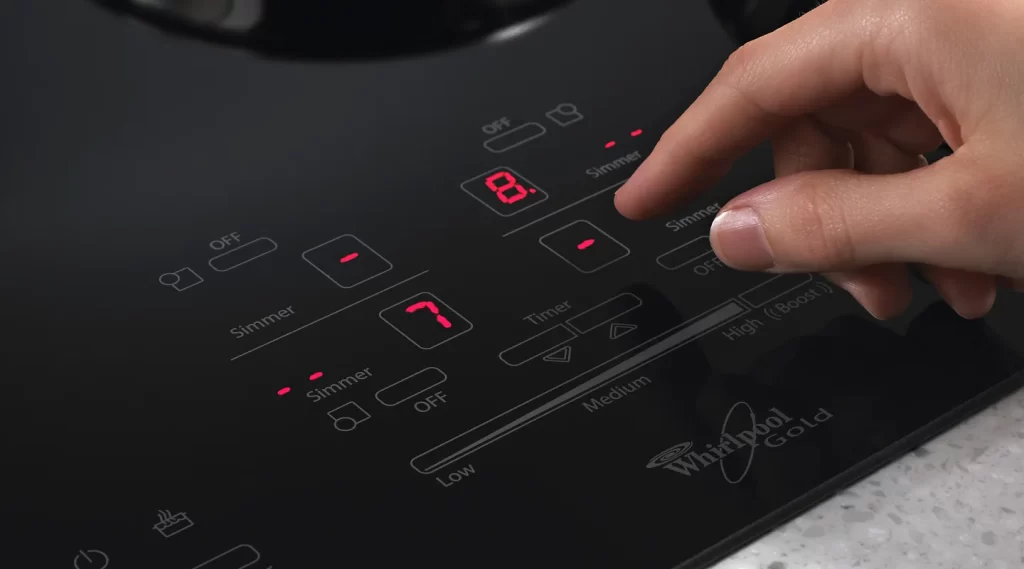
Some induction cooktops also offer a broader range of heat settings beyond this 1-9 scale, providing users with more versatility and control over their cooking.
How do I know if my stovetop is induction?
Here’s the updated guide on how to determine if your stovetop is an induction model:
To determine if your stovetop is an induction model, you can check for several key indicators:
- Magnetic Test: Use a magnet to test the stovetop surface. If the magnet sticks to the bottom of your cookware, it is induction-compatible. If it doesn’t stick, the stovetop is likely not induction. Note that this test checks the cookware rather than the stove itself, but it’s a good initial step.
- Stovetop Markings: Look for any labels, symbols, or markings on the stovetop or in the user manual that indicate it uses induction technology. Induction stoves often have an “induction” label or an “I” symbol on the control panel.
- Control Panel: Induction stoves typically have a smooth, flat glass-ceramic surface with touch-sensitive controls. Look for digital displays and touch controls, which are common features in induction models.
- Cookware Compatibility: Induction stoves require specific cookware. If your stove requires ferrous metal pots and pans (like cast iron or certain stainless steels) and doesn’t work with aluminum, copper, or glass cookware, it’s likely an induction stove.
- Surface Heating: Observe the surface while the stove is on. If the surface heats up significantly or begins to glow, it’s a traditional electric cooktop. If it doesn’t get hot or glow, or only warms slightly, it’s an induction cooktop. Induction cooktops may produce a small amount of heat without cookware, but not enough to cook food.
- Noise and Heating: Induction stoves often make a slight humming or buzzing sound when in use due to the electromagnetic coils. Additionally, the stovetop surface itself remains relatively cool, as heat is generated directly in the cookware.
- Manual or Manufacturer Info: Check the user manual or manufacturer’s specifications for your stovetop. This will provide definitive information on whether your stovetop is an induction model.
- Visual Cues: Induction cooktops usually have a smooth, glass-ceramic surface with marked zones or burners. They often have a modern and sleek design compared to traditional gas or electric stoves.
By checking these factors, you should be able to determine if your stovetop uses induction technology.
What is stove top induction?
Stovetop induction refers to a cooking method where a stovetop uses electromagnetic technology to heat cookware directly. Unlike traditional gas or electric stoves, which heat the surface and then transfer that heat to the cookware, induction stovetops generate an alternating magnetic field beneath the smooth surface. This magnetic field interacts with the base of induction-compatible pots and pans (typically made of ferrous metals like cast iron or some stainless steels), inducing electric currents that produce heat directly within the cookware.
This method allows for faster, more efficient cooking, as the stovetop surface itself remains relatively cool, reducing the risk of burns and making it safer. Induction stovetops are known for their precise temperature control and sleek, modern design, which often includes a flat, glass-ceramic surface with touch-sensitive controls, making them a stylish and practical addition to contemporary kitchens.
Is Induction Different from Electric and Gas Stoves?
Absolutely, and here’s why:
| Stove Type | Heat Source | Efficiency | Control | Surface Temperature |
| Induction | Electromagnetic (direct to pan) | 85-90% efficient | Precise temperature | Cool to the touch |
| Electric | Heated coils or radiant elements | 70-75% efficient | Moderate control | Stays hot after use |
| Gas | Open flame | 30-40% efficient | Instant heat control | Hot surface, fire risk |
Why induction wins: Compared to gas and traditional electric, induction is more efficient (less energy wasted), safer (no open flame), and offers faster heating with precise temperature control. In my kitchen, it was a game-changer for slow simmers and rapid boils.
Are Induction Stoves More Energy-Efficient?
Yes, and here’s the breakdown. Induction stoves are among the most energy-efficient cooking methods available. Here’s why:
- Direct Heating: Since the heat is transferred directly to your pan, there’s minimal energy loss. In fact, induction cooking is up to 90% energy efficient compared to gas (30-40%).
- Faster Cooking: With induction, water boils nearly twice as fast as on a gas stove. That means less time spent cooking and less energy wasted.
- Cooler Kitchen: Since the stove surface doesn’t get hot, less heat escapes into the kitchen, keeping it cooler (and saving on air conditioning!).
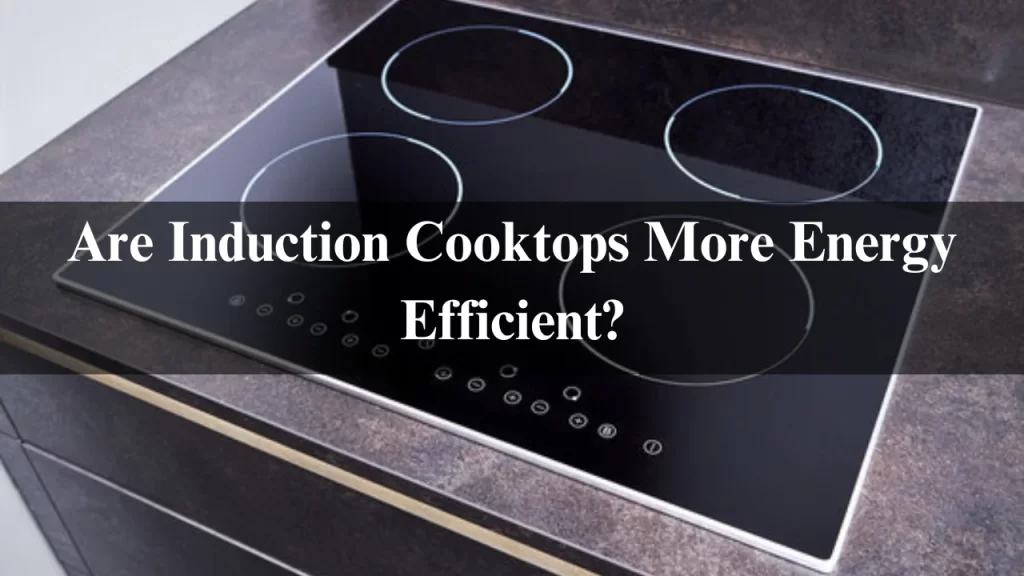
Personal note: In my experience, my induction stove significantly cut down cooking time, and I noticed a decrease in my energy bills. Plus, my kitchen stayed cooler even after hours of cooking!
What Are the Downsides of Induction Stoves?
Like any technology, induction stoves aren’t perfect. Here’s what I learned after using one for a while:
Cookware Compatibility
- As I mentioned earlier, not all pots and pans will work on an induction stove. Replacing non-compatible cookware can be expensive.
Power Requirements
- Induction stoves often require a dedicated 220V power outlet, which might mean extra installation costs if your kitchen isn’t set up for it.
Learning Curve
- The speed and precision of induction cooking can take some getting used to. For example, cooking popcorn (which I love) on an induction stove was tricky at first, but once I figured out the right temperature, it was a breeze.
Related Articles:
Induction Cooktops How to use and how its work? Latest Info 2024
Is A Magnetic Induction Stove Better Than A Traditional Stove?
Are Induction Stoves Considered Inductive Loads? 2024
Why Do Induction Stoves Make Those Annoying Clicks? 2024
Conclusion
Induction cooktops represent a significant advancement in cooking technology, offering a modern and efficient alternative to traditional gas and electric stoves. By utilizing electromagnetic energy, induction stoves heat cookware directly, resulting in faster and more precise cooking while keeping the stovetop surface relatively cool and safe. They come in various types, including portable units for flexibility, built-in models for sleek integration, and ranges with ovens for comprehensive cooking solutions.
Additionally, specialized designs like downdraft cooktops and modular systems cater to specific needs, while smart induction cooktops integrate advanced features for enhanced convenience. Whether you’re looking for a space-saving portable model or a high-tech integrated range, induction cooktops provide versatile options to suit any kitchen and cooking style.
FAQs
Do induction stoves require special pans?
Yes, your cookware must be made of ferromagnetic material like cast iron or magnetic stainless steel.
Can I use an induction stove if I don’t have a 220V outlet?
No, most induction stoves require a 220V outlet. If you don’t have one, you’ll need to hire an electrician for installation.
Are induction stoves more expensive than gas or electric?
They can be, but the energy savings over time and the speed of cooking can offset the initial cost.
Can an induction stove overheat?
Induction stoves have built-in safety mechanisms that prevent overheating. If it gets too hot, it will automatically shut off.

